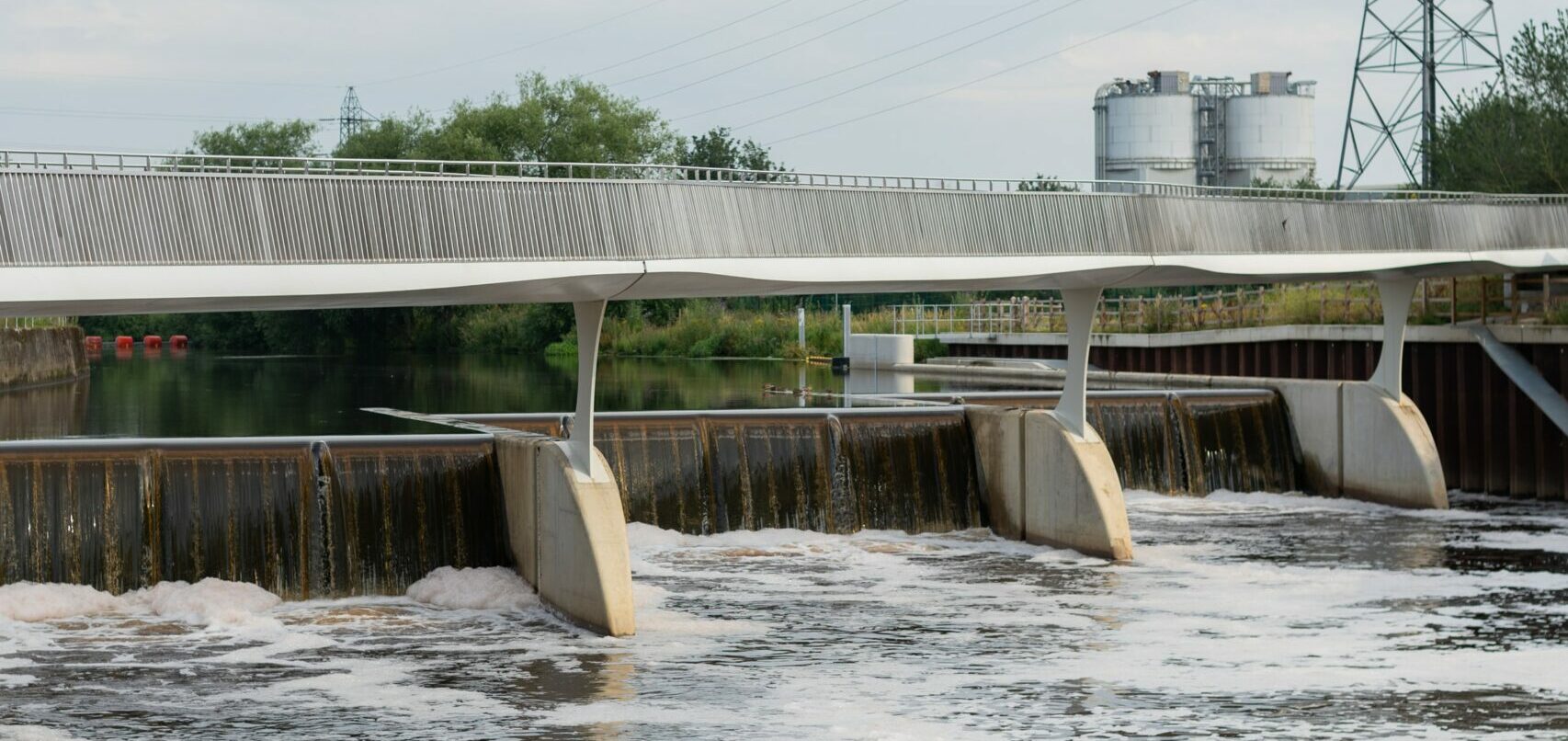Insight – Nutrient Neutrality in Norfolk and how we can maintain positive momentum
We are now just over two years on from Natural England’s Directive on “Nutrient Stressed” declining Special Areas of Conservation (SACs), which has effectively placed a hold on any development with overnight accommodation in affected parts of Norfolk and numerous other areas of the country. Nationally there are 74 local planning authorities affected by a declining SAC due to nutrient loading. In Norfolk our declining SAC includes our beloved Broads plus associated Ramsar site, a National Park with over 125 miles of navigable lock-free waterways, and the wider corridor of the River Wensum.
The nutrient neutrality directive is a means of ensuring that a development plan or project does not add to existing nutrient burdens within catchments, so there is no net increase in nutrients as a result of the plan or project. Where neutrality measures are needed, the purpose of these mitigation measures is to avoid impacts to the designated sites, rather than compensating for the impacts once they have occurred.
As a business, we’ve spent a considerable amount of time over the past two years studying the directive and subsequent reporting, as well as undertaking our own research and learning how it has impacted developers across our home county.
We’ve even appointed new team members with prior experience of dealing with nutrient neutrality regulations, enhancing both our understanding and capability to support affected developers. Associate Director (Water & Flood Risk) Claire Burroughs is one such member, who previously worked with Ashford District Council, the first planning authority to be affected by regulations in 2019 on their district level mitigation scheme. Our Technical Director (Water & Flood Risk) Graham Sinclair, who is based in our Norwich office has continued to attend all local nutrient neutrality events and liaise with a number of organisations over the past two years to keep abreast with this ever-changing issue.
As part of a new collection of guidance, strategy and thought related articles, we want to share our views on the situation as it stands and, crucially, what we can be doing to get stalled developments moving. Roughly five years have passed since the initial directive was issued on the Stodmarsh lake in Ashford. During this time span there have been a number of options approved by Natural England which are available to use for mitigating phosphate and nitrate impacts on a particular development site in the affected catchments, the most common of which we summarise as follows:
- Agricultural offsetting: Deintensification of either arable (through reducing/removing fertiliser use) or livestock uses and using the reduction in nutrient loading from these practices as an offset against new development.
- Wetland Restoration: Restoring and enhancing or building new wetland areas can help trap and process nutrients, improving water quality and biodiversity, particularly downstream of Waste Water Treatment Works (WWTWs). Although recent research has suggested these are not as effective as first thought and we are starting to see a shift away from them being a viable solution.
- Buffer Strips and Riparian Zones: Establishing buffer strips of vegetation and ground level changes along water bodies and riparian zones helps filter and absorb nutrients from runoff (particularly from arable land) before they reach water bodies.
- Green Infrastructure: Incorporating green infrastructure elements such as rain gardens, bioswales, permeable pavements, and vegetated swales into urban and residential areas can capture and filter nutrients from stormwater runoff.
- Septic System Upgrades: Upgrading and properly maintaining septic systems can reduce nutrient leaching into groundwater and surface water. Therefore, the upgrade of an older septic tank or treatment plant to a newer system can release a significant amount of nutrient ‘credit’ for new development, something which is being pioneered by The Norfolk Rivers Consortium.
- Sewage Treatment Enhancements: Improving sewage treatment plants with advanced nutrient removal technologies can reduce nutrient discharge into water bodies. The upcoming Technical Achievable Limits (TAL), which will come into force in 2030, will impose tighter control on Anglian Water’s WWTWs, serving population equivalents greater than 2000. However, this does not provide credit, more a lesser requirement for offsetting, post 2030, once the upgrades are in place. Options do remain open for private works upgrades, but we are finding the option for private investment into Anglian Water’s WWTWs difficult to pursue as a result of time constraints and resource availability within those organisations.
Many of the above approaches are now being developed into credit purchase schemes by various entities, although there is a cost associated with these schemes. For some stalled developments, where a land purchase has potentially already been made, the development can become unviable because the cost of a credit purchase has not been built into the land purchase value, pre-2022.
We have seen these credit prices vary significantly but what is clear from our internal research is that they are likely to only now increase beyond those initially offered by Norfolk Environmental Credits Ltd (the consortium set up by the affected local authorities). We note also that the delivery of credits through this scheme has been slower than expected and thus we should wholly rely on it with other suppliers starting to come onto the market now as well.
What is clear, however, is that no individual site is the same with no one size fits all rule, and with only a limited number of credits being available on the market at this present moment in time, the onus is pushed onto the developer (at least for developments of any scale) to find a solution to keep things moving. Therefore, as any new opportunity presents itself, it is crucial to undertake a detailed nutrient neutrality review at the earliest possible stage and determine what strategy suits it best and what external factors might be required (additional land for mitigation, credit purchase etc.). This will then allow appropriate financial planning to be undertaken, from the outset. We are finding with some schemes that developing an on-site solution (private treatment, SuDS etc.), to reduce the nutrient burden as far as possible, at an early stage in the planning process is essential to forming a financially viable scheme. Especially on arable land we have found that in some cases the site can wholly mitigate itself within the proposed red line boundary, negating the need for any external credit purchases etc.
The next hurdle is engagement from Natural England as a statutory consultee. On a recent scheme we have been asked to engage with Natural England only to be told after a formal request that they do not have the resources available to help us at this point in time. This is something which must change and soon to ensure consultants can get development approved swiftly or local planning authorities need to resource this in-house as competent authority.
As we move towards the General Election both main parties have included manifesto pledges with regards to Nutrient Neutrality. The Labour Party suggest they will ‘implement solutions’ to get the industry moving in affected areas whilst the Conservative Party pledge is slightly clearer cut, stating they will in effect develop a national credit scheme for a developer to buy into, something which would be much easier said than done and begs the question as to why this hasn’t been done in the past two years to date?
What these pledges mostly do is bring further uncertainty into the market in terms of preventing private investment until there is a more defined direction post-election. This will further delay any solutions or private credit purchase schemes which ultimately is what is needed to solve this issue.
Overall, issues related to the directive appear to be progressing better now than they ever were and we ourselves are hopeful that more credit schemes become available this year. However, we are eager to stress that a proper and accurate site appraisal, carried out at the earliest stages, is the best approach to ensure a robust understanding of the long-term cost and whether there are any opportunities within a particular development to provide additional credits, thus increasing land value.
At Create we are taking a proactive and collaborative approach towards dealing with the issues impacting Norfolk and willing to provide advice and technical assistance to anyone who needs it. To discuss any of the items raised in this article, please reach out to either Graham Sinclair or Claire Burroughs.
ABOUT INSIGHT
Insight is our way of discussing ongoing challenges and issues facing our industry. These posts will be separate to our usual news and project posts and identified via the insight tag. Our thought and think pieces will range from discussions on regulations and legislations, laws and governance to national strategy and local policy.






